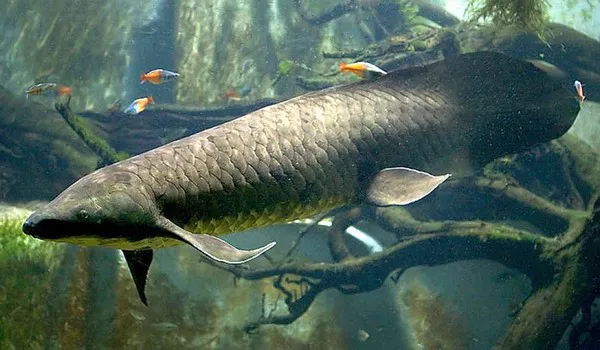Lungfish are a unique and interesting group of aquatic animals that have been around for over 380 million years. They are known for their lung-like organs, which allow them to breathe air and survive in oxygen-poor environments. However, despite their name, there is some debate among scientists about whether or not lungfish are actually fish. In this article, we will explore the characteristics of lungfish and examine the evidence for and against classifying them as fish.
What are Lungfish?
Lungfish are a group of freshwater fish that are found in Africa, South America, and Australia. There are six species of lungfish, and they are all characterized by their ability to breathe air through lungs, in addition to obtaining oxygen through their gills. They have a long, slender body with a flattened head, and their skin is covered in tough scales. Lungfish can grow to be quite large, with some species reaching lengths of over six feet.
Are Lungfish Actually Fish?
The question of whether or not lungfish are actually fish is a matter of debate among scientists. Traditionally, lungfish have been classified as fish, as they share many characteristics with other aquatic animals that are commonly considered fish. For example, they have fins, scales, and a streamlined body shape that allows them to move easily through the water. They also lay eggs and undergo a metamorphosis from a larval stage to an adult stage, which is a common trait among fish.
However, there are also some key differences between lungfish and other fish that have led some scientists to question their classification. One major difference is their ability to breathe air through lungs. While some other fish species, such as the mudskipper and the catfish, are also capable of breathing air, they do not have true lungs like lungfish do. Instead, they use a modified swim bladder to extract oxygen from the air. Additionally, lungfish have a unique arrangement of teeth that is not found in other fish species.
Evidence for Classifying Lungfish as Fish
Despite the differences between lungfish and other fish species, there is still plenty of evidence to support classifying them as fish. For one, they share many of the same physical characteristics as other fish, such as fins, scales, and a streamlined body shape. They also lay eggs and undergo a metamorphosis from a larval stage to an adult stage, which is a common trait among fish. Furthermore, lungfish are closely related to other fish species, and they share a common ancestor that lived over 400 million years ago.
Evidence Against Classifying Lungfish as Fish
On the other hand, there are also some key differences between lungfish and other fish that make some scientists hesitant to classify them as fish. The most notable of these is their ability to breathe air through lungs, which is a trait that is not found in any other fish species. Additionally, lungfish have a unique arrangement of teeth that is not found in other fish species.
In conclusion, the question of whether or not lungfish are actually fish is a matter of debate among scientists. While lungfish share many characteristics with other fish species, such as fins, scales, and a streamlined body shape, they also have some key differences, such as their ability to breathe air through lungs. Ultimately, the classification of lungfish as fish or something else may come down to personal opinion, as there is evidence both for and against their inclusion in the fish category. Regardless of how they are classified, however, lungfish remain a fascinating and unique group of aquatic animals that have much to teach us about the evolution of life on Earth.
Recommended reading:


























